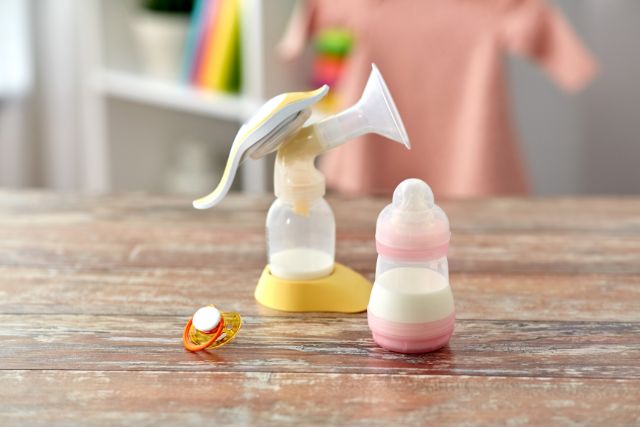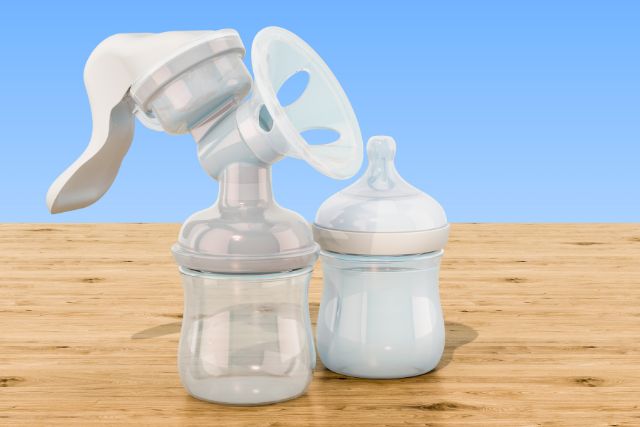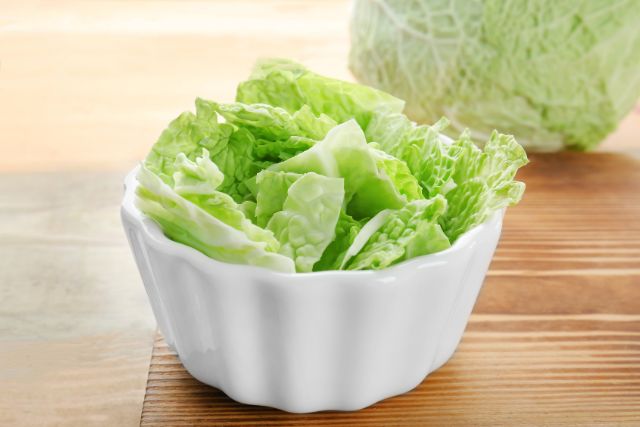Have you stopped breastfeeding, and may be wondering how to dry up breast milk naturally?
Mama,
You are not alone.
Drying up breast milk is a common concern for many mothers. The pain, discomfort, and engorgement that often accompany the drying-up process can be like a “thorn in the flesh.”
I mean,
The emotional struggle of weaning is something else.
As such, dealing with mastitis or excreting breast pain would be the last thing you want to experience after this long breastfeeding journey.
So,
How do you evade the distressing consequences of drying up your breast milk?
The answer is simple.
Seek safe and effective methods for this transition.
While this process can be uncomfortable, it’s essential to approach it gently and safely.
And that is where I came in.
As a mother of three, I’ve tested the best and the worst things you can do when trying to dry up breast milk.
In this blog, I’ll explore a range of natural methods and tips to help ease the transition from lactation to a milk-free state.
From dietary adjustments to soothing remedies, I’ll provide practical guidance on navigating this natural phase of motherhood with care and comfort.
Ready to learn? Let’s dive right in.
Related:
Why Choose to Dry Up Breast Milk Naturally?
Most mothers choose to dry up breast milk naturally for various reasons;
Gentle Transition
Natural methods for drying up breast milk tend to be gentler on the body compared to sudden cessation or medication. This can minimize discomfort and reduce the risk of complications like mastitis or blocked milk ducts.
Reduced Engorgement
Gradual weaning through natural methods can help alleviate the painful engorgement as opposed to when you stop breastfeeding abruptly.
Emotional Comfort
Gradual weaning allows both the mother and baby to emotionally adjust to the end of breastfeeding. It can be a less emotionally challenging experience for both parties.
Less Risk of Infections
Gradual drying of breast milk reduces the risk of developing breast infections like mastitis. Sometimes, these infections can occur if you stop milk production suddenly.
Baby’s Well-being
Natural weaning methods ensure that the baby’s nutritional needs are gradually met through other sources. You may slowly introduce formula or solid foods before stopping to breastfeed. Doing so reduces any potential stress or discomfort on your baby.
Flexibility
Natural drying-up methods give mothers more flexibility in choosing when to stop breastfeeding through ample planning time. This is crucial for your emotional well-being and your baby’s health.
Related:
How to Dry Up Breast Milk Naturally
1. Gradually Reduce Your Extraction to Slow Down Milk Production
Breast milk production works pretty much like the law of demand and supply.
When you minimize breastfeeding or milk expression, your body signals your brain to stop making more milk. And as the days go by, you may stop struggling with oversupply.
Mothers who choose to reduce breastfeeding or expression sessions gradually seem to suffer less from breast pain or engorgement issues.
This is because slow weaning helps you to avoid painful full breasts and reduces the risk of mastitis.
Additionally, your infant gets ample time to adjust and develop new routines and expectations, thus lowering the possibility of extreme emotional traumas.
Action;
Plan and give yourself a few weeks of reduced breastfeeding sessions before stopping entirely.
Ideally, it may take about 6 weeks for your milk to dry. You may maintain early or bedtime breastfeeding sessions and do away with in-betweens until you feel ready.
The earlier you start preparing your brain to produce less milk, the less discomfort and engorgement you may experience while drying up breast milk.
2. Use Herbal Tea for Lactation Suppression
A study shows that herbs like sage, peppermint, and chest berries can help with weaning or oversupply issues.
Drinking tea from these herbs can help dry up breast milk naturally.
Sage-leaf tea has been my all-time favorite.
This tea can help relieve breast engorgement due to oversupply. It also helps reduce your chances of having plugged ducts and mastitis.
Action;
- Using I to 3 grams of dried sage leaves, make herbal tea and drink it in the morning and evening.
- Drink one mug of peppermint tea two times per day. You can also apply Peppermint oil directly to the breasts if you are not breastfeeding. The tingling sensation has proven to ease the engorgement pain.
Note: You should never use peppermint oil if you are still nursing or having skin-to-skin contact with your baby.
- Apply some jasmine flowers or flower extracts to your breasts. Jasmine reduces serum prolactin levels when applied directly to the breasts, which can reduce oversupply.
- Eat parsley. Like Jasmine, parsley may lower prolactin levels, a key hormone in milk production. I prefer using parsley as a seasoning agent or eating it as a salad.
3. Use Cabbage Leaves to Dry Up Breast Milk Naturally
Cabbage leaf is an effective therapy for drying up milk supply naturally.
Why?
The cabbage leaves contain sulforaphane, a natural chemical that can absorb some of the breast fluid, reducing the fullness of the tissue.
Furthermore, chilled Cabbage leaves give you a soothing antidote to engorged and inflamed breasts.
So
How do you use cabbage to stop breast milk?
To use Cabbage:
- Rip apart green cabbage leave and wash it with clean water
- Put the leaves in a container for refrigeration overnight.
- Place a chilled leaf over each breast before wearing your bra.
- The change leaves after a few hours or once they’ve wilted.
- Wear the Cabbage leaves day and night until your breasts stay soft. This may take 3 to 5 days
Related:
4. Wear a Supportive Bra
Wearing a supportive bra is a psychological trick that burs your brain from producing more milk.
Why?
Because of decreased stimulation.
A well-fitting or supportive bra can help reduce stimulation of the breast tissue. This decreased stimulation signals the brain to produce less milk, aiding in gradually reducing the milk supply.
Action
From morning to evening, dress fully as a working mom on an outdoor mission.
Related:
5. Pay Attention to Your Diet
Diet plays a crucial role in milk production. To dry up the breast milk naturally, you may need to do away with lactogenic foods for at least a week or more.
Lactogenic foods like oats, flax, or dark chocolate hot teas can make your body produce more breast milk.
Action
Stop eating lactogenic foods like;
- Fennel
- Fenugreek seeds
- Barley
- Brewer’s yeast
- Oats
- Almonds
6. Avoid Stimulants like Hot Showers
Some women find that a hot shower stimulates or triggers their milk letdown. Others, however, find having a skin-to-skin session with their baby may trigger their let-down.
Identify and avoid your triggers for the first weeks you’re trying to dry up your milk supply.
If you consistently avoid stimulants, you may experience less let-down sensations or leaking due to suppressing lactation
7. Switch to Estrogen-Dominant Birth Control Method
Estrogen can help reduce breast milk production because it has an inhibitory effect on the hormone prolactin.
Prolactin is the hormone primarily responsible for milk production in the mammary glands.
As such, it plays a crucial role in stimulating breast milk production.
During pregnancy and breastfeeding, your body produces high levels of prolactin.
This hormone helps stimulate the milk-producing cells (mammary alveoli) in the breast to make more milk.
Consequently, the reverse is true.
You may need to reduce your prolactin levels to dry up breast milk fast.
Estrogen plays a more significant role in reducing milk supply during the weaning process.
And here is why.
As estrogen levels rise (which can happen naturally or through hormonal contraception or certain medications), they further inhibit the milk-producing cells.
These gradually reduce milk production.
Taking estrogen-dominated birth control pills can help stop lactation.
In fact, most mothers see a drop in milk production after taking one pill daily for a week.
It would help if you only took Birth control after your doctor’s assessment and recommendation.
8. Use Ice Packs to Manage Inflammation
When trying to dry up your milk, sometimes your breasts may feel sored and inflamed.
Using ice packs can be an effective tool for managing inflammation.
Placing ice packs on your breasts can cause vasoconstriction. They constrict or narrow your blood vessels, resulting in less blood flow to the area.
Reducing blood flow helps limit the delivery of inflammatory cells to the site of inflammation.
This, in turn, decreases the release of inflammatory mediators and chemicals, which contribute to the inflammatory response.
Also, Ice packs can numb the inflamed breast. This relieves pain by reducing nerve activity.
Action.
Using ice packs properly is essential to avoid complications like frostbite or tissue damage. Here are some guidelines you should follow for your safety:
- Be sure to wrap your ice pack in a thin cloth. This can be a towel before applying it to the skin to prevent frostbite or cold burns.
- Apply the ice pack for 15-20 minutes, allowing the skin to warm up between applications.
- Avoid prolonged or continuous use of ice packs. Excessive cold exposure can have adverse effects on your nerves.
9. Use Painkillers to Manage Pain
Painkillers are drugs that relieve pain. Sometimes, you may experience pain due to breast engorgement.
Taking an anti-inflammatory pain reliever like ibuprofen can be a better short-term solution to manage your pain.
In fact, one study advocates for ibuprofen as a preferred choice of painkiller for lactating mothers.
This is because of its low levels in breastmilk, short half-life, and safe use in infants.
If the pain persists, you should seek help from your doctor or professional healthcare provider.
What Dries Up Breast Milk Faster?
To help dry up your milk supply faster, gradually reduce breastfeeding sessions, drink one cup of sage tea at least twice daily, wear chilled cabbage leaves, and reduce your stimulants. Also, some estrogen-dominated birth control may help dry breast milk faster. Be sure to talk to your professional healthcare provider before taking any medication.
How Long Does Breast Milk Take to Dry Up?
Drying your breast milk can take days, weeks, or months. It all depends on the method of your choice and how long you’ve been breastfeeding. Gradual weaning is by far the safest plan. The less you empty your breast, the quicker your breast milk will dry up.
This happens because your body realizes it doesn’t need to produce more milk.
Some women have managed to dry up their milk supply in only a week or two, while others have continued to produce breast milk in decreasing quantity for up to 6 weeks.
Does Vitamin B12 Dry Up Breast Milk?
According to a study, Vitamin B12 is a normal component of human milk. However, there have been many claims that high doses of B vitamins, including (B-1, B-6, and B-12) may work to suppress lactation.
But how valid are these claims?
One old research performed in the 1970s showed that high doses of B-6, B-1, and B-12 suppressed lactation in about 96 percent of the participants without adverse side effects.
Another research also shows that most prenatal and multivitamins contain Vitamin B6 (pyridoxine hydrochloride). This study states that pyridoxine suppresses prolactin hormone, blocks lactation, and can inhibit the secretion of breast milk in nursing mothers.
However, a different study that sought to ascertain the efficacy of current evidence supporting the effectiveness of pyridoxine in inhibiting post-partum lactation is inconsistent and insufficient.
Additionally, medics warn that taking high doses of vitamin B-6 can affect your arm and leg sensory ability.
In case you want to use vitamin B-6 to dry up breast milk supply, please consult a healthcare provider or lactation consultant for a proper dosage.
Take away
Though it may feel challenging and uncomfortable, drying up breast milk naturally is possible.
First, have a plan. You may start by reducing your breastfeeding session to lower the rate of milk production. Also, choose a method with minimal risks or side effects as discussed.
Now that you know some strategies for drying up breast milk, do me a favor.
Share this post with other mothers you know who may be looking for help. Comment with your experiences or any strategy I may have missed.
Up Next:
- How To Lose Weight While Breastfeeding
- Post Partum Belly: 11 Tips For a Flat Tummy After Pregnancy
- 9 Surprisingly Effective Natural Remedies for Stretch Marks After Pregnancy
- 33 Things That Make Parenting Life Easier




